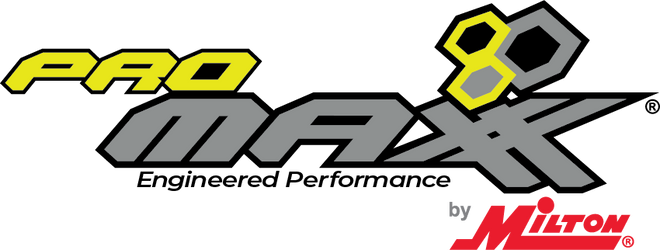Anthony User Guide
ANTHONY - EXHAUST MANIFOLD REPAID
CLICK HERE TO VIEW PDF-
Mount the ProPlate™ to the cylinder head using the included ProFast PPF008375 or PPF008500 precision fasteners according to the included cylinder head schematic. Torque to a minimum of 20 FT-LBS.
-
Insert the ProBushing™ and corresponding ProDrill™ machine grade tooling bit into an air-powered angled style drill and use the drill depth gauge machined into the ProPlate™ to set the proper depth of the bit and mark the bit if necessary. Apply one drop of the ProLube™ PPL001 drilling & tapping cutting fluid.AVOID PENETRATING OIL/SPRAY OR OTHER LUBRICANTS.
-
Insert the mounted ProDrill™ into the included ProBushing™ mounted in the ProPlate™ first by slowly and manually turning the chuck until the ProDrill™ slips into the bushing and contacts the surface of the damaged stud. This will ensure the cutting edge is not damaged. Important step to avoid drill bit breakage. While applying light pressure, activate your drill both on and off five times (ten times if utilizing an air ratchet) in one second intervals. This is the MOST CRITICAL step of this repair as it facilitates precise alignment by creating a “seat” for the tooling bit to stay on center and not follow the angular broken surface of the stud. Moreover, this step allows the surface of the stud to conform to the cutting edge of the bit distributing the load evenly across the entire cutting edge of the bit providing for cutting extremely hard surfaces and extending cutting tool life.
-
After this initial start, drill continuously running your drill at the proper RPM (see below) and while the bit is turning, extract the bit in and out of the damaged stud while maintaining it in the bushing to “clean” or “excavate” cutting debris from the stud. Repeat this step progressively exerting more pressure until your drill reaches the maximum depth.
-
Remove the ProPlate™ and IF extracting the remnant, place the optional ProCutter PPC007A in your drill and toggle the drill on and off five times to remove the burr and clean the tapped hole. Place a mark approximately ¼” from the end of the optional ProTractor. Tap the ProTractor™ in to the depth of the line. DO NOT INSERT THE PROTRACTOR ANY FURTHER THAN AS INSTRUCTED ABOVE. Place the included slip-nut over the ProTractor™ and slide it up against the cylinder head. While holding the opposite end of the ProTractor™ and using a high-quality calibrated torque wrench, slowly and carefully apply torque, first in the clockwise direction, and then in the counter-clockwise direction to loosen the damaged stud. Repeat this motion several times by NOT EXCEEDING 75 IN-LBS OF TORQUE FOR THE PPT125 OR 150 IN-LBS FOR THE PPT188. If the damaged stud fails to release, STOP and remove the ProTractor™.
In more challenging cases, ProMAXX® recommends using the larger optional ProDrill™ (standard in some ProKits) and corresponding ProBushing™ to prepare in chasing/tapping threads to restore them to factory specifications. Repeat drilling instructons above for EVERY step. In the unlikely event an extractor fails, visit www.promaxxtool.com and search extractor repair kit. You may also contact technical support at 724-941-0941 for recommendations and procedures.
NOTE: ProMAXX® does not recommend tapered left-handed screw extractors as they have the potential to deform the remnant in the cylinder head increasing complexity of extraction. In addition, these extractors cannot be turned clockwise to unlock the damaged remnant. Approximate tooling cutting speeds (Under load): MIN: SSSC125@500 RPM, SSSC188/PLT188@300, SSSC270/ PLT270@250.
NOTE: Some air ratchets may not generate at sufficient RPM under load to be effective. SEE ProMAXX® ProRatchet PPR5260 or PowerDrill™ PPD2800 at www.promaxxtool.com for optimum efficiency and maximum productivity.
PROMAXX™ machine grade tooling is specially engineered to close tolerances of (+) .000” and (-) .001” and ground straight to ensure accurate and repeatable results in using your new device. Specify PROMAXX® genuine replacement parts and tooling for optimum performance and extended warranty coverage. Always use appropriate OSHA approved safety glasses/goggle and protective gloves while using this device and performing this operation.




